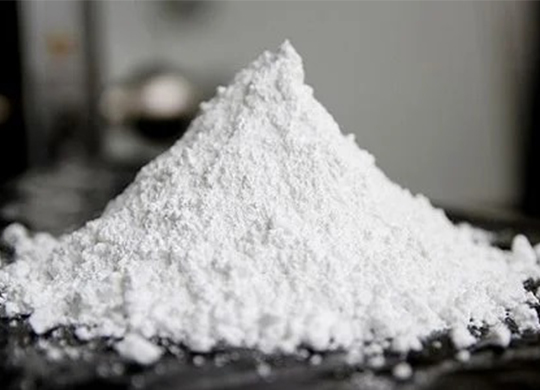

Coated Calcium Carbonate Manufacturers in India is a widely used mineral in various industries, including plastics, paints, paper, and rubber. Its popularity stems from its unique properties, such as improved dispersion, enhanced flowability, and a reduction in dust formation. These characteristics make it an ideal additive for improving the performance of final products. Understanding the factors influencing the price of coated calcium carbonate is essential for manufacturers, suppliers, and end-users.
Typical Chemical & PHYSICAL Analysis
|
|
|
|---|---|
| CaCo3 | 98 ± 1 |
| MgCO3 | 2+1 |
| Al-silicate | < 1% |
| Fe2O3 | < 0.1% |
| Moisture | 0.2% (Ex works) |
|
|
|
|---|---|
| Sp.Gravity | 2.7 |
| Bulk Density | 950 gm/lit |
| Oil Absorption | 19% |
| PH of Sat Solution | 8.2 |
| Moisture | 0.2% (Ex works) |
| Particle Size | Average | Top Cut |
| Distribution | 3.0 M | 12 M |
What is Coated Calcium Carbonate?
Coated calcium carbonate is produced by applying a coating material to the surface of calcium carbonate particles. The coating can be made from various substances, such as stearic acid or other organic compounds. This coating helps to enhance the hydrophobicity of the calcium carbonate, making it more suitable for use in applications where moisture resistance is crucial. The coating process also aids in improving the compatibility of calcium carbonate with polymeric materials, resulting in better overall performance in applications such as plastics.
Factors Influencing Coated Calcium Carbonate Prices
Raw Material Costs
The price of raw materials, particularly calcium carbonate, plays a significant role in determining the price of coated calcium carbonate. Fluctuations in the prices of limestone and other materials used in the production process can directly impact the final product's cost.
Coating Materials
The type and cost of the coating materials used also affect the price. For instance, the cost of stearic acid has varied over the years due to changes in demand and supply dynamics. When the prices of these coating materials increase, manufacturers may pass on the additional costs to consumers.
Production Processes
The production process for coated calcium carbonate can vary between manufacturers, affecting pricing. Some manufacturers may use more advanced or efficient production methods, leading to lower costs, while others might use less efficient processes that increase expenses. The scale of production can also influence pricing, with larger manufacturers typically benefiting from economies of scale.
Quality and Specifications
The quality and specifications of coated calcium carbonate, such as particle size, surface area, and purity, can also impact prices. Higher-quality products that meet stringent industry standards may command a premium price compared to lower-quality alternatives. For example, in the plastics industry, finer particle sizes are often required, which may result in higher production costs.
Market Demand
Demand for coated calcium carbonate varies across industries, influencing prices. For instance, an increase in demand from the construction or automotive sectors may drive prices up, while a decline in demand could lead to lower prices. Seasonal fluctuations in demand can also occur, impacting pricing strategies.
Geographic Location
The location of production facilities and the availability of raw materials can affect coated calcium carbonate prices. For example, manufacturers located near limestone deposits may have lower transportation costs, which can be reflected in their pricing. Conversely, companies that rely on imports may face higher costs due to shipping and tariffs.
Current Market Trends
The coated calcium carbonate market has seen notable changes in recent years. Growing demand for eco-friendly and sustainable materials has increased interest in coated calcium carbonate as a viable alternative to more harmful additives. Additionally, advancements in production technologies have improved the efficiency of coated calcium carbonate production, leading to competitive pricing.
However, the market is not without challenges. Global economic factors, such as inflation and supply chain disruptions, can lead to price volatility. Manufacturers must navigate these challenges while ensuring they provide high-quality products to meet customer demands.
Conclusion
Understanding the price dynamics of coated calcium carbonate is essential for stakeholders across various industries. By recognizing the factors that influence pricing, manufacturers, suppliers, and end-users can make informed decisions regarding their sourcing and purchasing strategies. As demand for coated calcium carbonate continues to rise, staying abreast of market trends and pricing fluctuations will be crucial for success.
In summary, the price of coated calcium carbonate is influenced by a variety of factors, including raw material costs, production processes, quality specifications, market demand, and geographic location. As industries evolve and sustainability becomes increasingly important, coated calcium carbonate is likely to play a key role in the development of high-performance products. Companies like Airotech Minerals and others in the industry are essential players, providing high-quality coated calcium carbonate to meet the needs of various applications.
